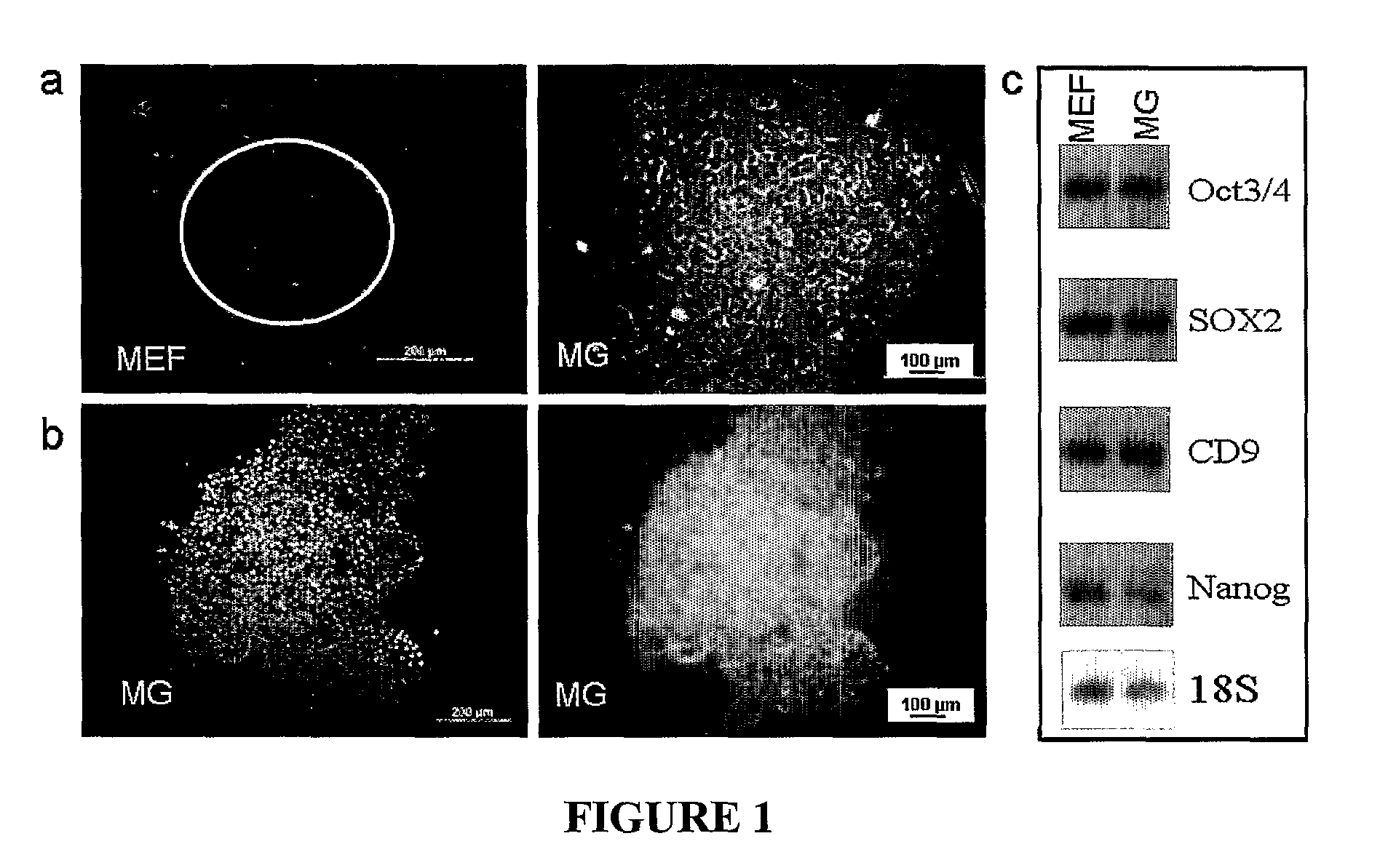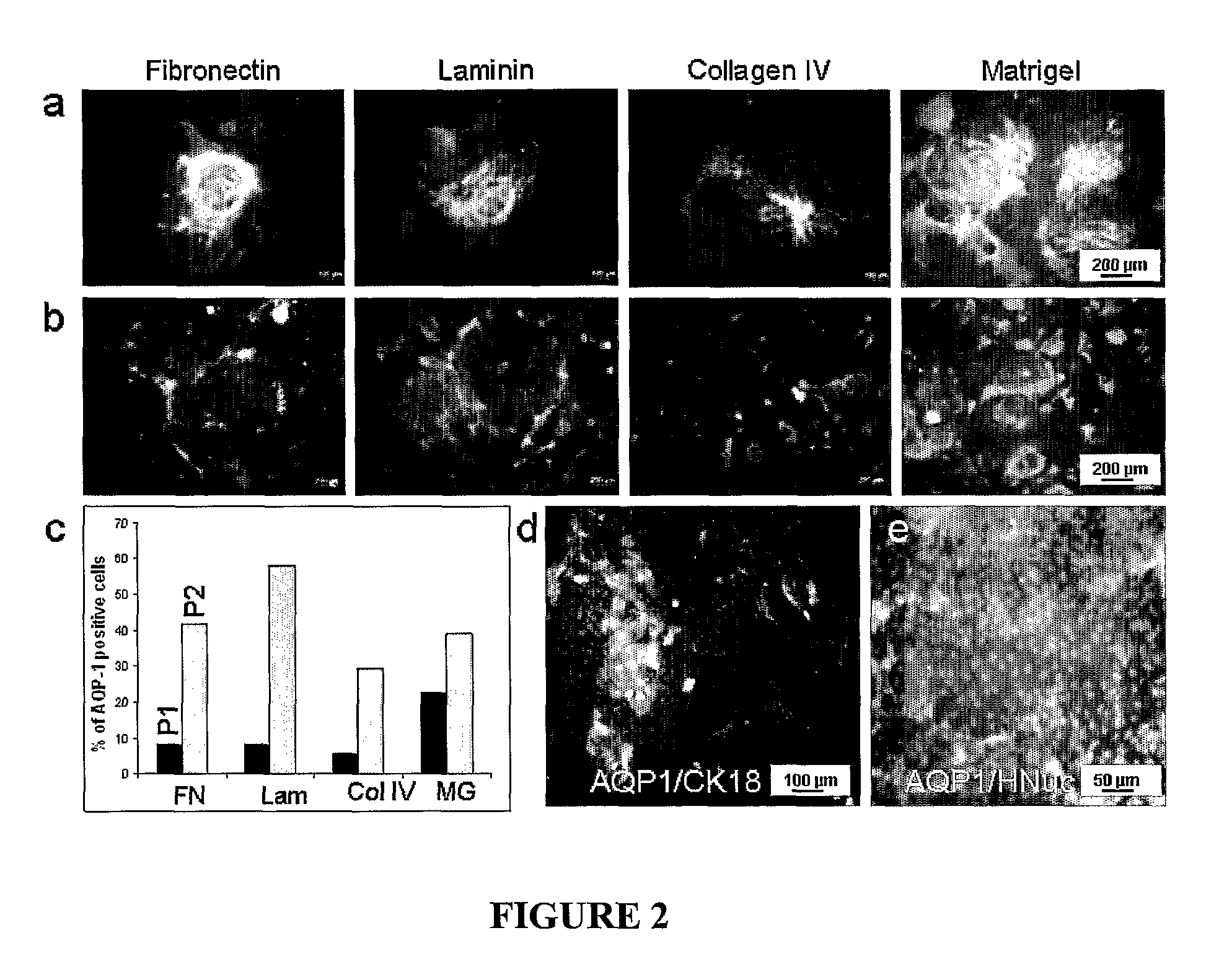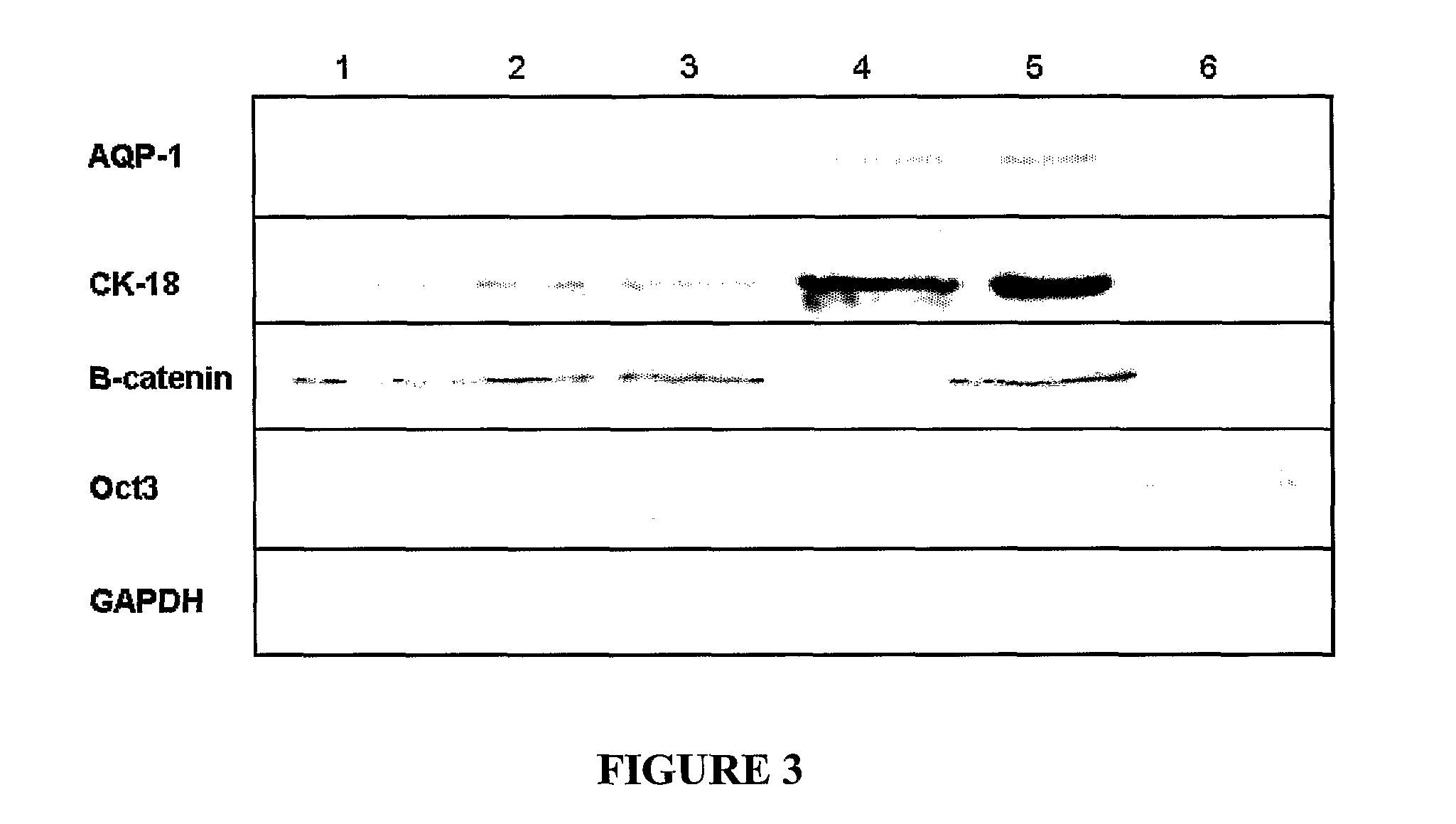Method for differentiating embryonic stem cells into cells expressing AQP-1
a technology cells, applied in the field of embryonic stem cells into cells expressing aqp1, can solve the problems of kidney disease, a major world-wide health problem, and limited regenerative medicine approaches aimed at replacing lost organ functions
- Summary
- Abstract
- Description
- Claims
- Application Information
AI Technical Summary
Problems solved by technology
Method used
Image
Examples
example 1
[0081]In this example, human embryonic stem (hES) were seeded on various culture surfaces with different extracellular matrix (ECM) components and cultured in a renal epithelial growth medium (REGM). This method was applied to differentiate hES into renal epithelial-like cells. After 10 days of culture in REGM, immunohistochemistry and Western blotting revealed expression of AQP-1 and CK-18 indicating an epithelial phenotype. Flow cytometry showed that the differentiated cells had a CD receptor expression profile similar to that found in human renal proximal tubule. In addition, the differentiated cells exhibited functional water transport and could be cultured for 7 days in a perfusion bioreactor without loss of AQP-1 expression. Thus, this method provides a differentiation protocol for the generation of functional renal epithelial-like cells that can potentially be used in strategies to replace lost renal function.
[0082]Materials and Methods
[0083]hES Cell Culture and Differentiati...
PUM
| Property | Measurement | Unit |
|---|---|---|
| concentration | aaaaa | aaaaa |
| concentration | aaaaa | aaaaa |
| pore size | aaaaa | aaaaa |
Abstract
Description
Claims
Application Information
 Login to View More
Login to View More - R&D
- Intellectual Property
- Life Sciences
- Materials
- Tech Scout
- Unparalleled Data Quality
- Higher Quality Content
- 60% Fewer Hallucinations
Browse by: Latest US Patents, China's latest patents, Technical Efficacy Thesaurus, Application Domain, Technology Topic, Popular Technical Reports.
© 2025 PatSnap. All rights reserved.Legal|Privacy policy|Modern Slavery Act Transparency Statement|Sitemap|About US| Contact US: help@patsnap.com



